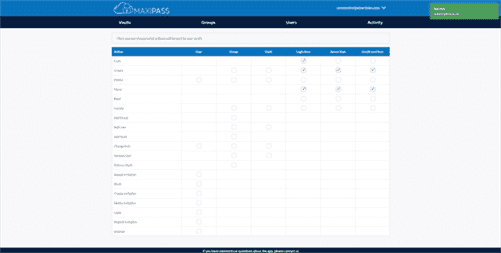Four Stages of Team Development What You Need to Know
For a great list of team building activities to help build team cohesion click the link. Putting the right people together with the right team member roles can really help your team get to performing faster. It might not be possible to plan an in-person meet-up, especially if your projects have short turnaround times.

This usually includes basic introductions, getting a “feel” for your team members and who will work together well, and identify potential early problems. Personalities can play a big role in how well a team will work together. Conflict personality types may have a very difficult time working as a cohesive team. The Five Stages of Team Developmentwere developed by psychologist Bruce Tuckman in 1965. These five stages advance as a team works together, but especially when a team brings awareness to their dynamic.
How to help your team through the stages of group development
When you start to sense that the left hand knows what the right hand is doing, you’ve made it into the “norming” stage. The challenge now is to move a bit faster while keeping the quality of your work high. Elevator Pitch – This exercise answers the “What exactly are we doing, and why?
You want to develop a keen sense of belonging in every member. Creating a team charter is a great tool to help your team, as is conducting different kinds of “get to know you” activities. This way, you can prepare for conversations that build trust while supporting your team and leading through each team development stage. In the Performing stage, the team makes significant progress towards its goals.
How Can Leaders Initiate Team Development?
The transition to Stage 2 can feel like the most challenging time for the leader. Members comply with plans proposed by the group leader or by a powerful what are the four stages of team development member. Group members oftenengage in activities such as exchanging personal or business stories that are not relevant to the task athand.
- Creating an elevator pitch together sets your team up with a consistent and simple explanation of your work and the unique value it delivers.
- One is being concentrated on their task as a response to their sadness about the separation of the group, which leads to increasing of productivity.
- Ateam has only reached a fraction of its potential productivity at this point, so it is counter- productive for aleader to maintain this seemingly blissful state.
- As team members begin collaborating, conflicts may arise, whether that’s from clashing personalities or opinions on how a project should progress.
- Now the group’s task is todevelop a unified set of goals, values, and operational procedures.
- In this stage, all team members take responsibility and have the ambition to work for the success of the team’s goals.
- With a clear communication plan in place, your team will know how to discuss their issues with the rest of the team in a constructive manner.
The leader should focus on her or his role as a facilitator and trust-builder. S/he should provide tools and tips to the team for effective communication and conflict management. If team members sense that they don’t have all the information, or that information is being selectively shared, they’ll keep their guard up.
Performing — High-performance is the name of the game.
In addition to evaluating accomplishments in terms of meeting specific goals, for teams to be high-performing it is essential for them to understand their development as a team. In the performing stage, consensus and cooperation have been well-established and the team is mature, organized, and well-functioning. There is a clear and stable structure, and members are committed to the team’s mission. Problems and conflicts still emerge, but they are dealt with constructively.

The team focuses on defining their structure, the way they will work and the goals they will seek. This is extremely important in order to orient the members during the development process. In agile software development, high-performance teams will exhibit a swarm behavior as they come together, collaborate, and focus on solving a single problem. Swarming is a sometime behavior, in contrast to mob programming, which can be thought of as swarming all the time.
Say Goodbye to Boring Meetings with These Fun Virtual Team Building Activities
Teams that have been working closely for some time have resolved enough issues to understand what success looks like for them. For example, success can be anything from higher customer acquisition to a positive shift in the metrics they’re tracking. Every team moves through the four stages of development, and may slip back a stage or two as new challenges or opportunities arise. Being resilient, laying aside ego and working together will allow the team to meet the challenges and emerge stronger than when they started. It can be tempting to avoid conflict, but doing so doesn’t help team building.
They are comfortable sharing information and discussing problems openly, leading to the team delivering results. This is why it is important to understand the fact that teams develop and mature over a period of time. Knowing where your team is currently in can help you understand how to work through your current challenges and get to the next stage. Each stage of team development presents its own special challenges to a group of people striving to work together successfully by forming a well-oiled team. By knowing where they’re at, the team and the organization can take specific actions at each stage of team development to support the team’s success in accomplishing the team mission. In the Performing stage of team development, members feel satisfaction in the team’s progress.
The 5 Stages Of Team Development Explained
Choose a project management software that lets you plan the entire project and assign deadlines and responsibilities so everyone can see what tasks need to be accomplished. It’s quite another for team members to understand what specific responsibilities each person has and how that fits into the larger picture. Full knowledge of the skills that everyone brings to the https://www.globalcloudteam.com/ table, like development, web design, marketing, or product knowledge. This background will help the team solve problems faster and get the right information to the correct person on the first try. As issues are addressed and resolved, the team’s morale begins to increase. Trust builds, productivity rises and the team begins working together toward the common goal.

Your team needs to communicate clearly and, rely on one another rather than turn on each other. This is a crucial point in team development where leaders can pinpoint bottlenecks, areas of improvement and couple them with team strengths to build forward momentum. Team members are able to prevent or solve problems in the team’s process or in the team’s progress. A “can do” attitude is visible as are offers to assist one another.
Stage 4: Performing stage
The most commonly used framework for a team’s stages of development was developed in the mid-1960s by Bruce W. Tuckman. As mentioned before, these stages usually pass naturally regardless of if each participant knows or not. Knowing each step and what it is supposed to do will allow each member to get the maximum out of the experience and not miss anything that could be a critical part of team building. This is the final stage of group development many groups eventually face.
